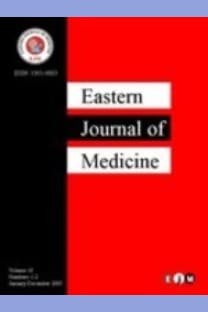The Effectiveness of Laparoscopic Training Box On Learning Curve In Gynecology Residents
The Effectiveness of Laparoscopic Training Box On Learning Curve In Gynecology Residents
___
- 1. Munz Y, Kumar BD, Moorthy K, Bann S, Darzi A. Laparoscopic virtual reality and box trainers: is one superior to the other? Surg Endosc 2004; 18: 485-94.
- 2. Bridges M, Diamond DL. The financial impact of teaching surgical residents in the operating room. Am J Surg 1999;177(1):28–32.
- 3. Clevin L, Grantcharov TP. Does box model training improve sur- gical dexterity and economy of movement during virtual reality laparoscopy? A randomised trial. Acta Obstetricia et Gynecologica 2008; 87: 99-3.
- 4. Scott DJ, Young WN, Tesfay ST, Frawley WH, Rege RV, Jones DB. Laparoscopic skills training. Am J Surg 2001; 182: 137-2.
- 5. Lee TD, Genovese ED. Some reminiscences on distribution of practice effects. Res Q Exerc Sport 1989;60(3):297–9.
- 6. Karaman E, Aras A, Çim N, Kolusarı A, Kızıltan R, Çelik S, Anuk T. Maternal and fetal outcomes after laparoscopic vs. Open appendectomy in pregnant women: data from two tertiary referral centers. Ginekol Pol. 2016;87(2):98-103. doi: 10.17772/gp/58752. PMID: 27306285.
- 7. Borahay MA, Jackson M, Tapısız OL, et al. Assessment of minimally invasive surgical skills of pre-medical students: What can we learn from future learners? J Turk Ger Gynecol Assoc 2014;15(02): 69–73. Doi: 10.5152/jtgga.2014.0044
- 8. Scott DJ, Young WN, Tesfay RN, Frawley WH, Rege RV, Jones DB, authors. Laparoscopic skills training. Am J Surg. 2001;182:137–42.
- 9. Akdemir A, Zeybek B, Ergenoglu AM, Yeniel AO, Sendag F. Effect of spaced training with a box trainer on the acquisition and retention of basic laparoscopic skills. Int J Gynaecol Obstet. 2014 Dec;127(3):309-13. doi: 10.1016/j.ijgo.2014.07.015. Epub 2014 Aug 13.
- ISSN: 1301-0883
- Yayın Aralığı: 4
- Başlangıç: 1996
- Yayıncı: ERBİL KARAMAN
Armin HOVEIDAEI, Mehrshad FEKRI, Amir HUMAN HOVEIDAEI
Tuncay YÜCE, Feride SÖYLEMEZ, Erkan KALAFAT, Batuhan ASLAN, Esra ÖZKAVUKÇU, Acar KOÇ
Factors Affecting Survival Analysis In Non-Metastatic Operated Gastric Cancer Patients
Hayriye TANİN, Nurhan ÖNAL KALKAN
Torg Ratio In Normal Ageing Population: No Risk of Stenosis
Necat KOYUN, Mehmet Ata GÖKALP
Social Appearance Anxiety in Patients with Contact Dermatitis
Hanım Güler ŞAHİN, Selver KARAASLAN, Reyhan ORHUN, Nizamettin GÜNBATAR, Abdullah YEŞİLOVA, Cem Taylan ERDEN
